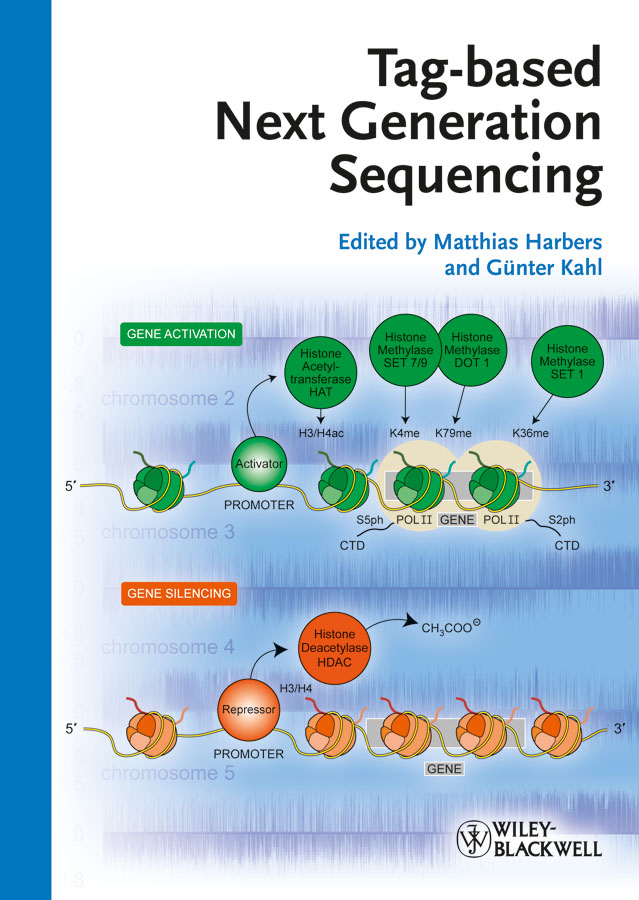Электронная книга: Harbers Matthias «Tag-based Next Generation Sequencing»

|
Tag-based approaches were originally designed to increase the throughput of capillary sequencing, where concatemers of short sequences were first used in expression profiling. New Next Generation Sequencing methods largely extended the use of tag-based approaches as the tag lengths perfectly match with the short read length of highly parallel sequencing reactions. Tag-based approaches will maintain their important role in life and biomedical science, because longer read lengths are often not required to obtain meaningful data for many applications. Whereas genome re-sequencing and de novo sequencing will benefit from ever more powerful sequencing methods, analytical applications can be performed by tag-based approaches, where the focus shifts from'sequencing power'to better means of data analysis and visualization for common users. Today Next Generation Sequence data require powerful bioinformatics expertise that has to be converted into easy-to-use data analysis tools. The book's intention is to give an overview on recently developed tag-based approaches along with means of their data analysis together with introductions to Next-Generation Sequencing Methods, protocols and user guides to be an entry for scientists to tag-based approaches for Next Generation Sequencing. Издательство: "John Wiley&Sons Limited"
ISBN: 9783527644773 электронная книга Купить за 16073.86 руб и скачать на Litres |
Другие книги схожей тематики:
| Автор | Книга | Описание | Год | Цена | Тип книги |
|---|
См. также в других словарях:
DNA sequencing — Part of a series on Genetics Key components Chromosome DNA • RNA Genome Heredity Mutation Nucleotide Variation … Wikipedia
ChIA-PET — Chromatin Interaction Analysis by Paired End Tag Sequencing (ChIA PET) is a technique that incorporates chromatin immunoprecipitation (ChIP) based enrichment, chromatin proximity ligation, Paired End Tags, and ultra high throughput sequencing to… … Wikipedia
ABI Solid Sequencing — is a form of DNA sequencing. DNA sequencing encompasses biochemical methods for determining the order of the nucleotide bases, adenine, guanine, cytosine, 5 methyl cytosine, and thymine, in a DNA oligonucleotide which is described by McKernan,… … Wikipedia
Fourth-generation programming language — A fourth generation programming language (1970s 1990) (abbreviated 4GL) is a programming language or programming environment designed with a specific purpose in mind, such as the development of commercial business software.[1] In the history of… … Wikipedia
Massively parallel signature sequencing — Massive parallel signature sequencing (MPSS) is a sequenced based approach that can be used to identify and quantify mRNA transcripts present in a sample similar to serial analysis of gene expression (SAGE) but the biochemical manipulation and… … Wikipedia
Paired-end Tags — Paired end tags, also known as PET, refer to the short sequences at the 5’ and 3’ ends of the DNA fragment of interest, which can be a piece of genomic DNA or cDNA. These short sequences are called tags or signatures because, in theory, they… … Wikipedia
